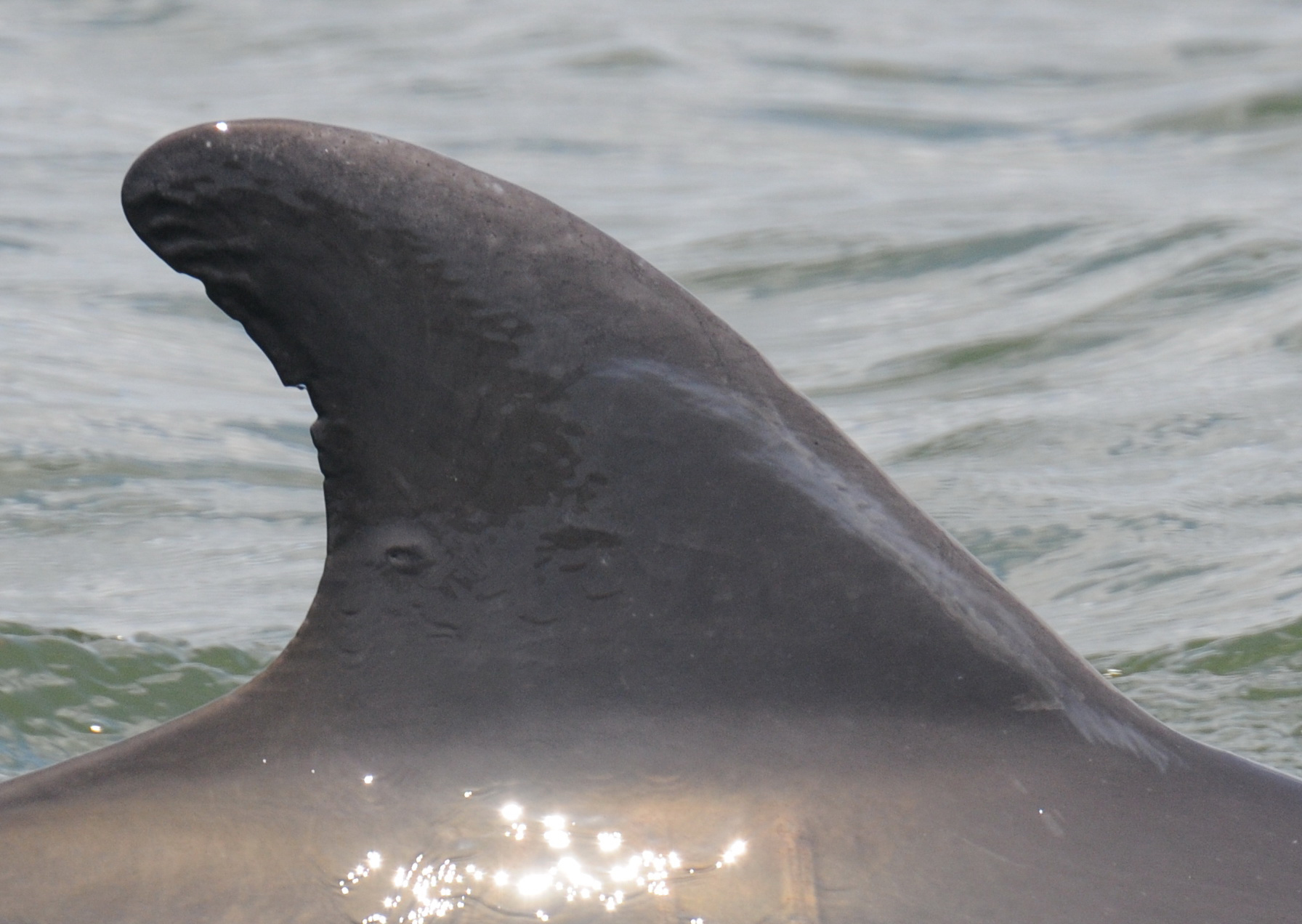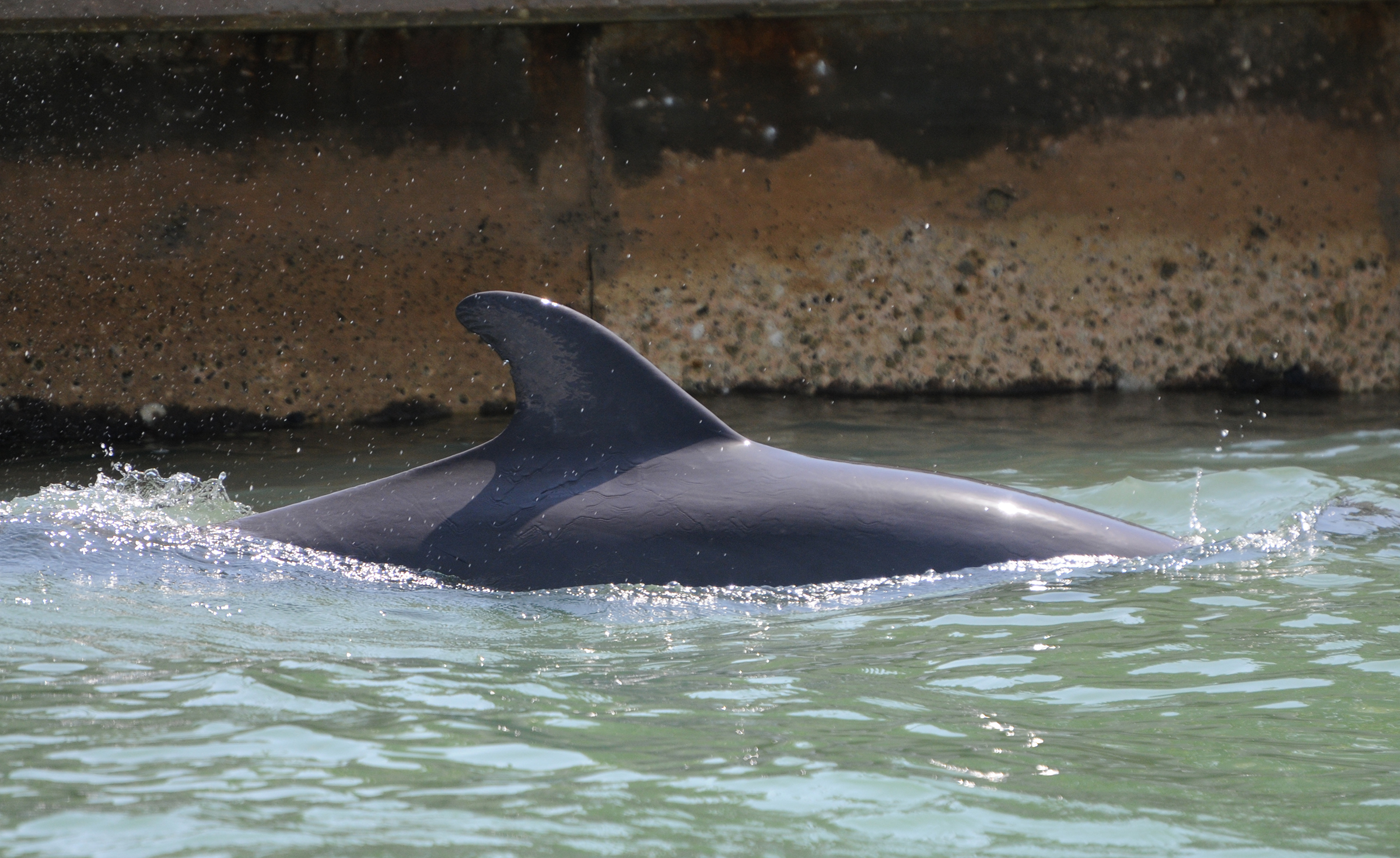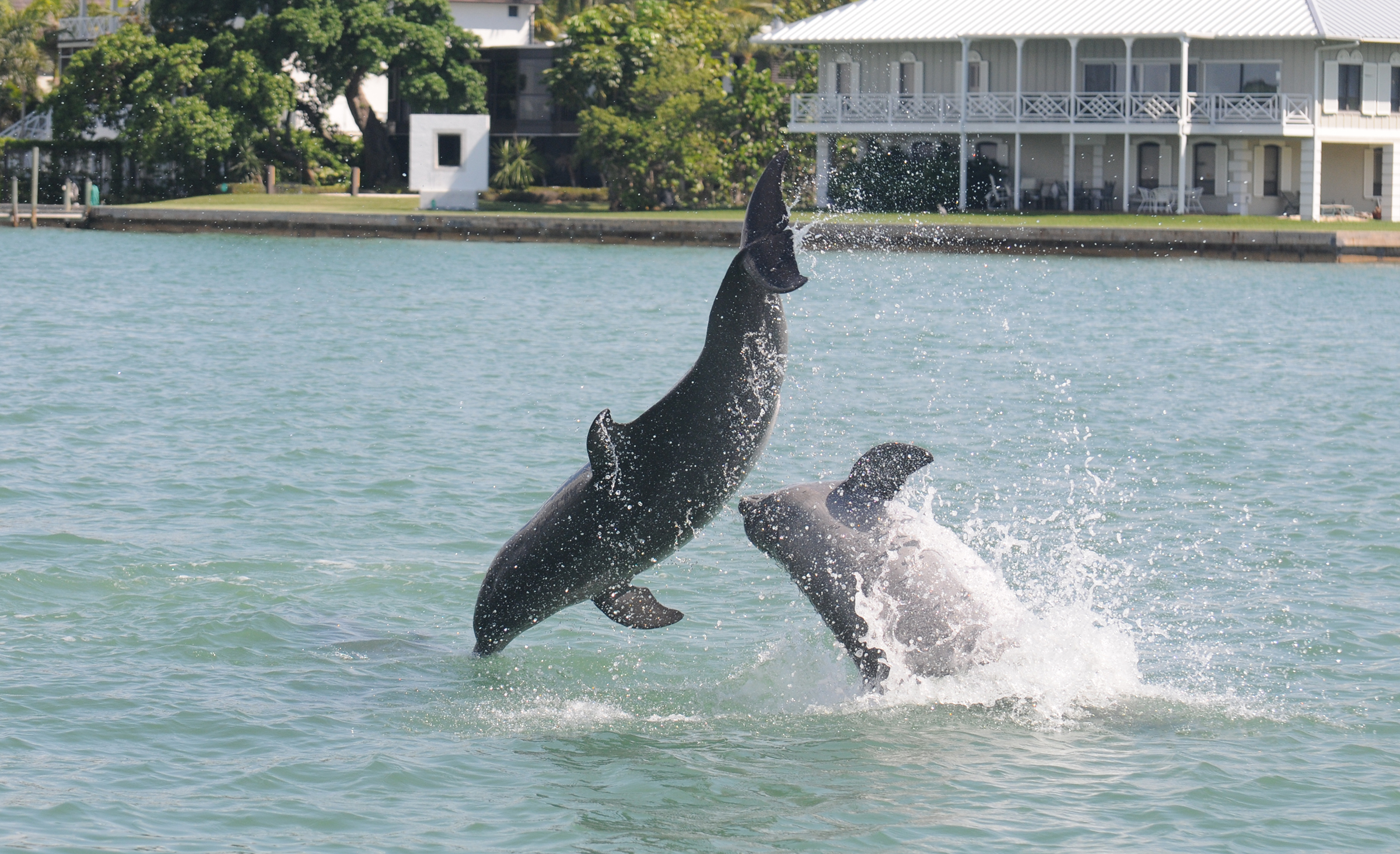Dolphin F211
Stats
Name: F211, also known as Ginger
Sex: Female
Age: Born 2005

A Dolphin’s Life
We’ve sighted Ginger more than 550 times since her birth in 2005. She is the first calf of F127 (Edamommy), who had only one other calf, F264, aka Wasabi. (See what we did there?!)
Ginger’s grandmother was FB13, who was first observed by SDRP in 1975, but died in 2009 at age 50.
We actually know Ginger a little bit better than most other Sarasota Bay dolphins — that’s because in December 2008, she was found stranded on Siesta Key Beach, shortly after separating from her mother following the birth of Wasabi.
SDRP and staff from Mote Marine Laboratory rescued Ginger and she was treated at Mote’s Dolphin & Whale Hospital for pneumonia and gastro-intestinal problems.
During her rehabilitation, we didn’t want her to get used to eating dead fish provided by humans, because we had every hope that she would return the wild, and we didn’t want her to be attracted to humans. By the time Ginger was released, she had eaten nearly 4,000 live pinfish — that’s 35 pinfish fed five times a day at about $1 per fish. Most of the fish came from Hart’s Landing in Sarasota, which went to Herculean efforts to help supply Ginger with all the live food she needed.
In February 2009, Ginger was deemed healthy and ready for release and the SDRP has been monitoring her progress ever since.
By all appearances, Ginger is a true rescue and rehabilitation success story: She is frequently observed feeding along the seawalls of Siesta Key and gave birth to her second calf in 2017.
In 2023, she gave birth to her fourth calf, 2114.
- You can read more about Ginger’s life history in “The True-Life Adventures of Ginger the Dolphin,” published in Sarasota Magazine in 2015 and in a wonderful children’s book “No Dead Fish for Ginger! The Story of a Sarasota Bay Dolphin,” written by Cathy Marine, a long-time volunteer with SDRP and Mote. Proceeds from the sale of the book support our dolphin research.
A Dolphin’s Voice
A Special Note About the Audio Recording
In collaboration with numerous colleagues over the past 35 years, our dolphin communication research team has collected thousands of hours of acoustic recordings from members of the resident Sarasota bottlenose dolphin community, with a focus on individually distinctive signature whistles. Recordings have been made during periodic health assessments, when we are able to obtain high-quality recordings of known individual dolphins. We are currently in the process of systematically assembling a verified signature whistle catalog, with multiple samples from each of the approximately 1,000 unique recording sessions of almost 300 individual dolphins. Members of this collaborative team, and our student researchers, come from Woods Hole Oceanographic Institution, the University of North Carolina Wilmington, University of St. Andrews, and Hampshire College. Learn more about dolphin communication.
Ginger feeds along a seawall in 2015

Ginger frolics with another dolphin between Siesta and Bird Keys





